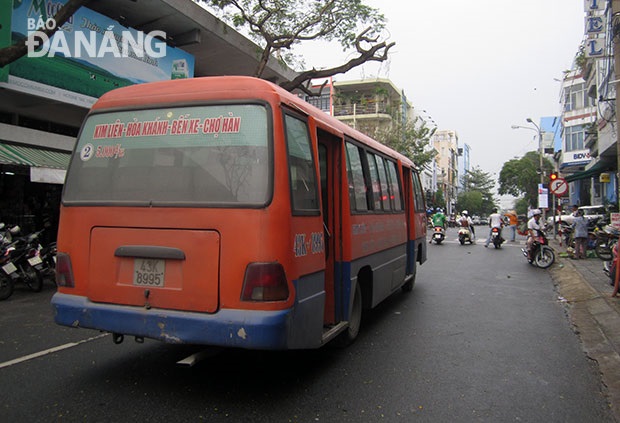Opinions gathered about developing BRT system
A meeting recently took place in Da Nang to gather opinions from domestic and foreign experts about the implementation of a project to develop a Bus Rapid Transit (BRT) system in the city.
 |
| A bus running on a local street |
The event was jointly organised by the World Bank in Viet Nam, the city’s Union of Science and Technology Association (USTA), and the Management Board of the Da Nang Priority Infrastructure Investment Projects.
The Chairman of the municipal USTA, Mr Van Huu Chien, remarked that the city has focused on implementing local transport infrastructure and urban upgrading projects over recent years. This has helped to bring numerous positive changes to the face of the city. However, the city’s existing bus transport system now meets only 1% of the local demand for this type of public transport. To deal with the matter, the city authorities recently gave the go-ahead to develop a BRT system in the city.
Mr Samuel L Zimmerman, a consultant to the WB and a retired senior urban transport specialist, stressed the need for the city to develop a public transport system. He explained that the BRT system’s transport capacity, its speed modulation, and safety levels are equal to, or even higher than, those of metro or overhead rail systems. Also, the total cost to build a BRT system is about 30% of that of the other 2 types of public transport.
The WB expert also affirmed that the BRT system will feature intelligent transportation systems. Each BRT bus will be equipped with a surveillance camera. In particular, station platforms will be level with the bus floor for quick and easy boarding, also making it fully accessible for wheelchairs, disabled passengers and baby strollers.
Work is expected to begin on the BRT system project in early 2017, and the first BRT route will be put into operation in the 2nd quarter of 2018.
The system will run one main BRT route and 2 sub-routes to meet the increasing travel demands of locals and visitors. They will operate daily from 5.00am to 9.00pm.
In detail, the 24.76km main route will run from the internal street No 5 in Hoa Khanh Industrial Park to Tran Dai Nghia Street. The first 35.4km sub-route, R1, will link the Da Nang International Airport to Hoi An’s Le Hong Phong Street, and the second 26.7km sub-route, R3, will connect the airport with the Ba Na Hills Resort.
The BRT system will operate 66 high-quality buses that meet the Euro 4 and 5 emission standards. Of these, 36 buses will run on the main route, whilst 17 and 13 buses will operate on routes R1 and R3 respectively.